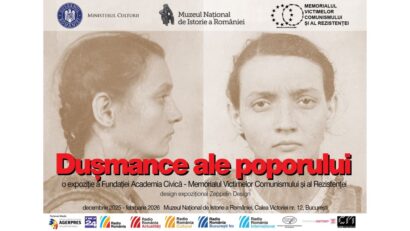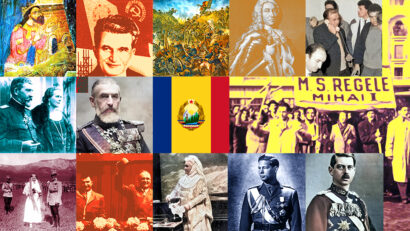80 years since Romania ceded Southern Dobruja
Southern Dobruja, today in northeastern Bulgaria, first became part of Romania in 1913.

Steliu Lambru, 12.10.2020, 14:00
Southern Dobruja or the Quadrilateral
as this region is also known, became part of Romania in 1913 following the
Treaty of Bucharest. In 1912, the Balkan League formed of Bulgaria, Greece,
Serbia and Montenegro had begun a military offensive against the Ottoman Empire.
After two months of fighting, they won Albania, Macedonia and Thrace. However, misunderstandings
between the allies over the division of conquered territory led to the start of
the Second Balkan War between Bulgaria and Serbia, Greece and Montenegro.
Romania became involved in the dispute against Bulgaria and on 10th
August 1913 the peace treaty signed in Bucharest redrew the borders between the
Balkan states.
The competition among the
Balkan states over territories under the control of the Ottoman Empire dated
back to the 19th century and was indeed fierce, often leading to
civil and military violence. This was the time of radical nationalism when the
political agenda was dominated by territorial claims. These claims were based
on historical rights and the ethnic make-up of the different regions. Thus,
each Balkan state felt entitled to occupy as much territory as possible to the
detriment of its neighbours. Western powers also got involved in the Balkans by
supporting one nation or another and trying to redraw the maps according to
their own interests and the situation on the ground. France and Great Britain
supported Greece and Serbia, Germany supported Romania and Bulgaria, and
Austro-Hungary and Italy supported Albania.
In this context, the
Treaty of Bucharest gave Romania Southern Dobruja, a territory whose ethnic
make-up at the time was 47% Bulgarians, 37% Turks, 4% Roma, 4% Tartars and 2% Romanians.
Southern Dobruja had first been promised to Romania under the Treaty of San
Stefano and Berlin in the aftermath of the Russo-Romanian-Turkish war of
1877-1878. Russia had promised this territory to Romania in exchange for southern
Bessarabia, but Romania only got Northern Dobruja. Romania felt it had been treated
unjustly and kept the issue on its agenda. After winning it in 1913, Romania
could only retain Southern Dobruja for three years. In 1916, when it entered
the war alongside France, Great Britain and Russia and was occupied by Germany,
Romania lost the whole of Dobruja, which was occupied by the Central Powers. At
the end of the war, under the Treaty of Neuilly sur Seine, the border between
Romania and Bulgaria went back to that of 1913.
Between 1918 and 1940,
Romania aligned its foreign policy to that of France and Great Britain, which resulted in
the collapse of its borders in 1940 under the new European order of Nazi
Germany. In June 1940, the Soviet Union, in agreement with Germany, occupied Bessarabia
and Northern Bukovina following two ultimatums to the government in Bucharest. At
the end of August 1940, under the Treaty of Vienna, Hungary occupied Northern Transylvania
and on 7th September 1940 a treaty was signed in Craiova by which
Romania ceded the Quadrilateral to Bulgaria. Both treaties were imposed on
Romania by Germany and Italy.
We asked historian Ioan
Scurtu if the fascist regime that had just come to power in Bucharest on 6th
September 1940 could have prevented this loss of territory:
The issue of the
Quadrilateral had been settled by Hitler in a letter to Carol II dated 15th
July 1940 asking him to cede part of Transylvania to Hungary and the
Quadrilateral to Bulgaria. So the decision was taken as early as the time of Carol
II. Negotiations were held in Turnu Severin during August and it was
established, based on a decision of the Crown Council led by Carol II, that
Romania would cede the Quadrilateral to Bulgaria. So only the documents were
signed during Antonescu’s time, the decision had already been taken.
Between 1918 and 1940, Romania
made a lot of efforts to develop Southern Dobruja or the Quadrilateral. As it had
pledged in the peace treaties signed in the aftermath of WWI, Romania had to respect
the rights of the Bulgarian and Turkish minorities with respect to property,
education and press in their own language, right to vote, legal assistance and
all the other rights enjoyed by Romanian citizens. In the 1920s, the Romanian military
authorities had to consolidate the southern border to cope with the incursions carried
out by Bulgarian paramilitary troops in Southern Dobruja and which resulted in
plunder and murder. Through its population policy, Romania sought to eliminate
the threat posed by the guerrilla forces across the border. Colonising Southern
Dobruja with ethnic Romanians and Aromanians from the former Ottoman Macedonia who
wanted to emigrate was a solution that yielded results. Thus, the percentage of
the Romanian population in Southern Dobruja increased constantly, and also
because parts of the Bulgarian population emigrated to Bulgaria. According to a
census from 1930, Bulgarians accounted for 37%, the Turks for 34%, the
Romanians for 20%, the Roma for 2% and the Tartars for 1%.
Apart from its
population policy, Romania developed the network of roads in Southern Dobruja,
modernising existing roads and building new ones. The development of towns like
Silistra, Bazargic and Balcic also dates to the Romanian administration, with
Balcic becoming the final residence of Queen Marie, who played a great contribution
to the birth of Greater Romania. The queen’s castle and its famous gardens are still
the main tourist attraction in Balcic today.






























